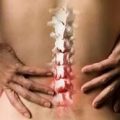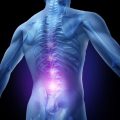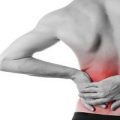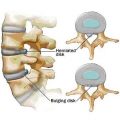Table of Contents
Degenerative disc disease (also known as DDD), is quite a misnomer, making it one of the misunderstood conditions in the world of medical science. Despite of its name, it is not really a disease, rather; a common condition that comes with the aging of the spine. Our body undergoes a lot of changes as we age, and as we get old; they degenerate and lose some of their characteristics that allow them to function the way they should. This includes our spinal discs – the jelly-like substance between our vertebrates that works as shock absorbers; prevent vertebrates from grinding from each other; and allows our spine to bend, stretch, twist, and move within its plane.
DDD causes our spine to lose its ability to function through thinning, which in turn can lead to lose of mobility and ultimately – pain. Depending on which area experiences DDD; the pain radiates through the extremities, either to the arms and fingers, or down to the buttocks, legs and feet.
This makes DDD one of the most common conditions of neck pain and low back pain.
DDD also has many different conditions.
Cervical Stenosis
Also called as Myelopathy or Radiculopathy, depending on its specific details, cervical stenosis involves the narrowing of the space between vertebrates; thinning the spinal disc and putting pressure on the spinal cord as well as the nerve branches that passes through the cervical spine.
Cervical Myelopathy on the other hand, refers to cervical problems that radiates to the upper and lower extremities; secondary to the spinal cord’s compression on the neck.
Cervical Radiculopathy on the other hand, refers to the upper extremities’ loss of function; which is secondary to irritation, and/or pressure on the spinal nerve on the cervical region.
Herniated Cervical Disc
Herniated disc refers to a cracked-open or ruptured disc located on the cervical region (neck) of the spine. The jelly-like material that leaks out through the spinal disc puts pressure on the nerves that passes through the spine. This results to pain, weakness on the shoulders that radiates down to the arms and fingers; as well numbness and tingling sensation on the mentioned parts of the body.
Herniated Lumbar Disc
As its name suggest, herniated lumbar disc refers to the cracked-open ruptured disc on the lumbar region (lower back). The jelly-like substance that leaks out from the spinal disc puts pressure on the nerves that passes through the spine, causing back pain; weakness on the shoulders that radiates down to the arms and fingers, as well numbness and tingling sensation that goes down to the buttocks, hips, legs and feet.
Lumbar Spinal Stenosis
Similar to the definition of spinal stenosis, lumbar spinal stenosis refers to the narrowing of the spinal canal in the low back region. This condition doesn’t necessarily come with painful symptoms. But in cases of pain and numbness, it can also come with back or leg cramping and weakness. In rare conditions, it can also come with bladder or bowel control problems.
Osteoporosis
This condition actually one of the more common known bone diseases, especially in United States and other developed countries. This disease refers to the deterioration of the bones, making bones lose their mass and deteriorate in structure. The deterioration of the bone causes weakness, which results to fracture, even without major trauma. Regular activities such as carrying groceries or climbing to the bed can even result to fracture of the bone.
Spondylolisthesis
This condition refers to the crack of the vertebrae, which may have developed from stress fracture. It usually results from constant pressure on the lower back. The fracture doesn’t normally heal as other normal bones and it affects around 5% of the adult population.
Spondylolysis is a type of vertebra facture and may not usually be a medical concern. However, in some cases, this can lead the vertebra to slip forward to the vertebra underneath, which results to isthmic spondylolisthesis.






 I love to write medical education books. My books are written for everyone in an easy to read and understandable style.
I love to write medical education books. My books are written for everyone in an easy to read and understandable style.